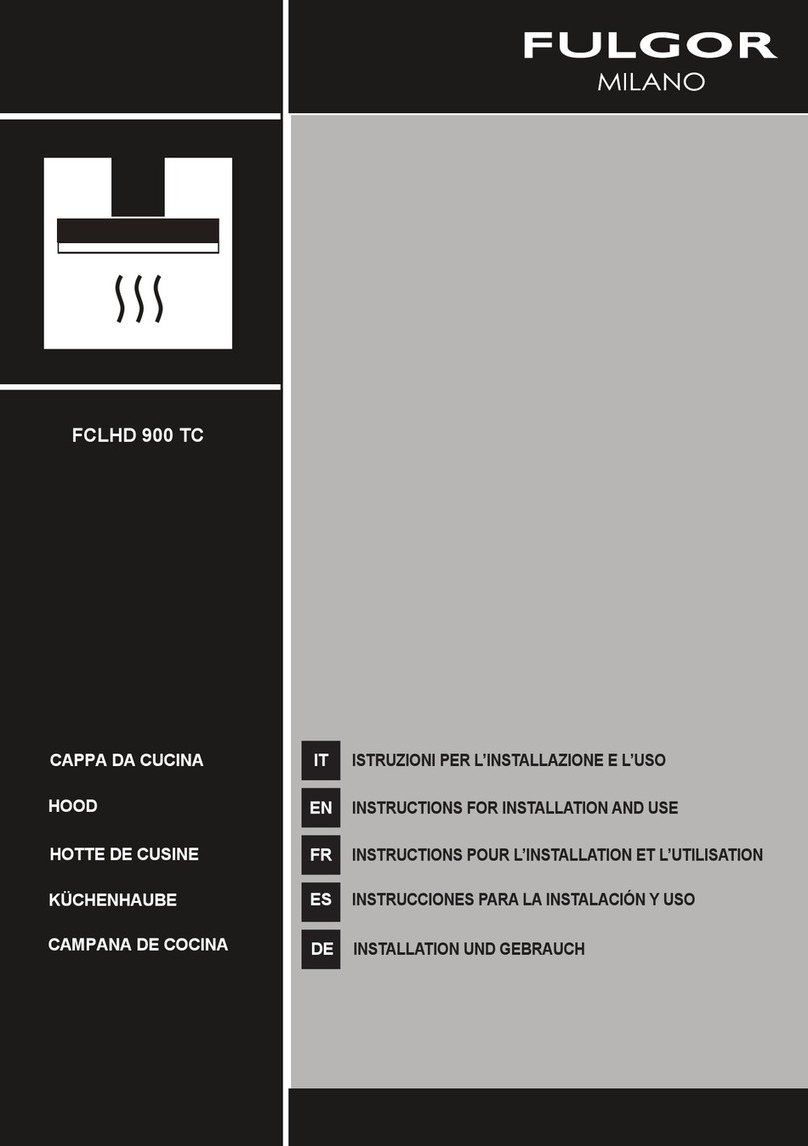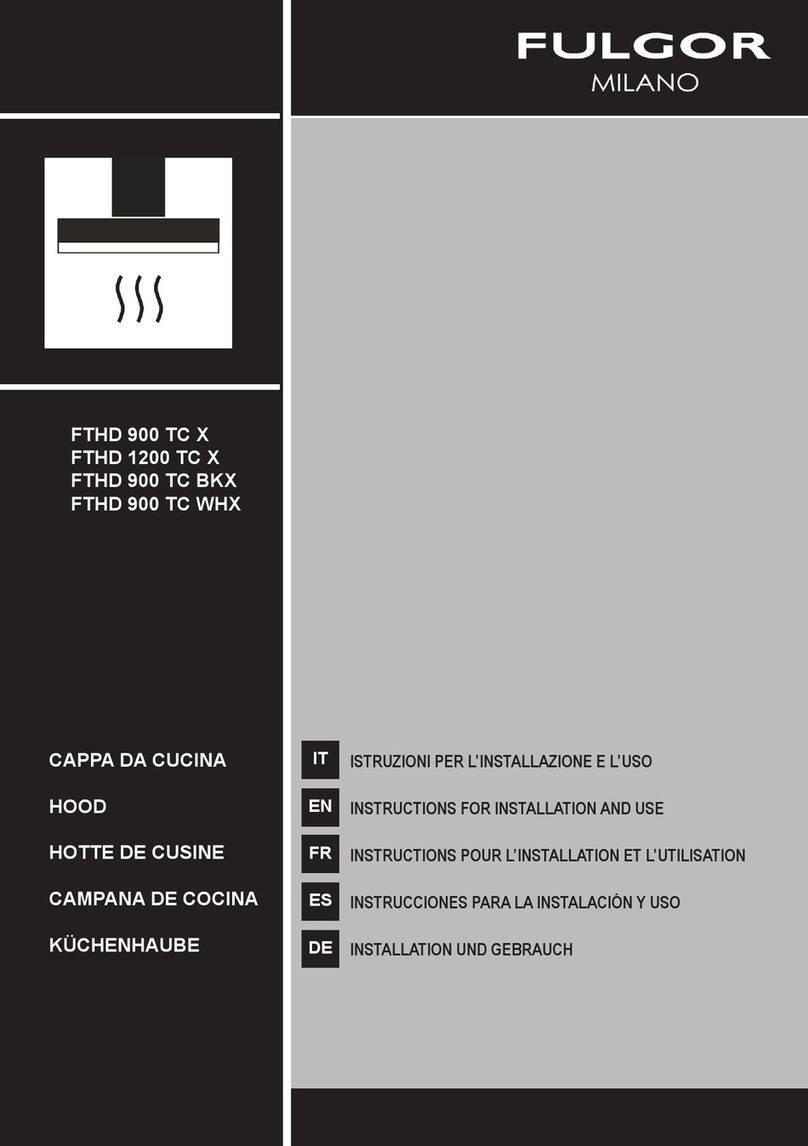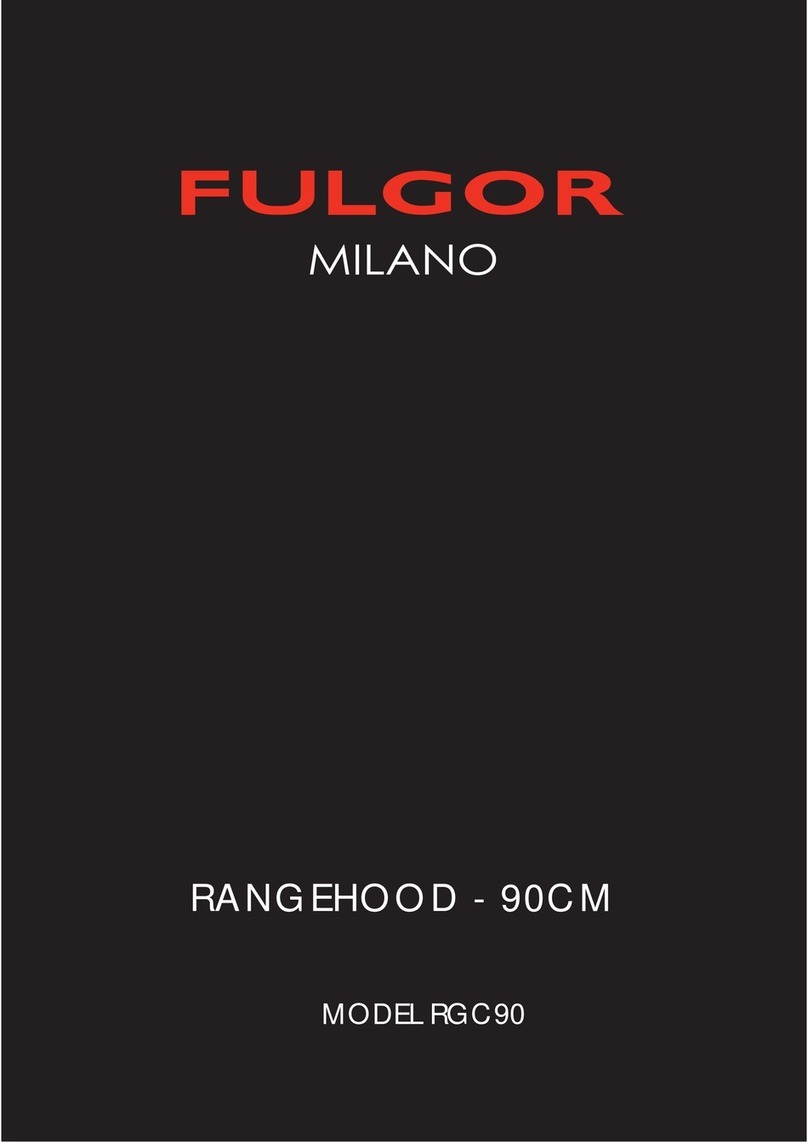
INSTALLAZIONE
Prima di procedere all’installazione, per evitare
danni dell’apparecchio, disinserire il ltro antigras-
so. La rimozione del ltro metallico antigrasso av-
viene operando sull’apposita maniglia spingendo-
la verso la parte posteriore della cappa e facendo
ruotare il ltro verso il basso sganciandolo dalla
sua sede (dis. 3).
Attenzione: l’installazione deve essere fatta da
almeno due persone.
Prima di procedere al ssaggio della cappa pre-
disporre l’alimentazione elettrica entro l’ingombro
del tubo decorativo ed un foro evacuazione aria
nel caso che la versione sia aspirante.
* Versione aspirante
Usando la piastra superiore (dis. 4.1) posizionan-
dola sul softto, effettuare 4 fori da 8 mm. in cor-
rispondenza delle asole. Nei fori eseguiti inserire
i tasselli in plastica (dis. 4.1-A) e ssare la piastra
sul softto con le viti (dis. 4.1-B). Successiva-
mente ssare la struttura inferiore (dis. 6.2) sulla
cappa facendo coincidere i fori della stessa con le
viti metriche saldate sul supporto ventilatore (dis.
6.1). Inserire le relative rondelle ed i relativi dadi in
dotazione (dis. 6.2-A) avvitandoli con un utensile
idoneo.
Collegare il tubo per l’evacuazione dell’aria sul
boccaglio del gruppo motore ssandolo con una
fascetta commerciale.
Inserire la struttura superiore (dis. 6.3) sopra quel-
la inferiore regolandone la posizione in base all’al-
tezza precedentemente stabilita tenendo presente
l’altezza minima dal piano cottura. Con le apposite
viti (dis. 6.3-B) ssare le due strutture.
A questo punto inserire i due tubi telescopici (dis.
6.4 e dis. 6.5) da sopra le strutture facendoli scen-
dere no alla apposita sede della cappa. Sollevare
la cappa con la struttura ed i tubi inseriti no a che
le quattro molle (dis. 6.6-E) non si agganciano alle
asole (dis. 6.3-C).
Una volta agganciate le due parti ssare tramite le
viti di sicurezza (dis. 5.2-A) i due componenti (dis.
5.1 e dis. 5.2) collegando successivamente il tubo
della cappa al foro di evacuazione.
Effettuare il collegamento elettrico.
VERSIONI D’USO
L’apparecchio è già predisposto sia per la versio-
ne ltrante sia per la versione aspirante.
* Nella versione ltrante (dis.1) l’aria ed i vapori
convogliati dall’apparecchio, vengono depurati
sia da un ltro antigrasso sia da un ltro al car-
bone attivo e rimessi in circolazione nell’ambiente
attraverso le grigliette laterali del camino. Nell’uso
in versione ltrante è necessario l’uso di un de-
viatore aria (dis.1), che posto nella parte superiore
del tubo permetta il riciclo dell’aria nell’ambiente.
* Nella versione aspirante (dis. 2) i vapori ven-
gono convogliati direttamente all’esterno, tramite
un condotto di evacuazione che si collega con la
parte superiore della parete o del softto. L’utilizzo
del ltro al carbone non è necessario.
9
































